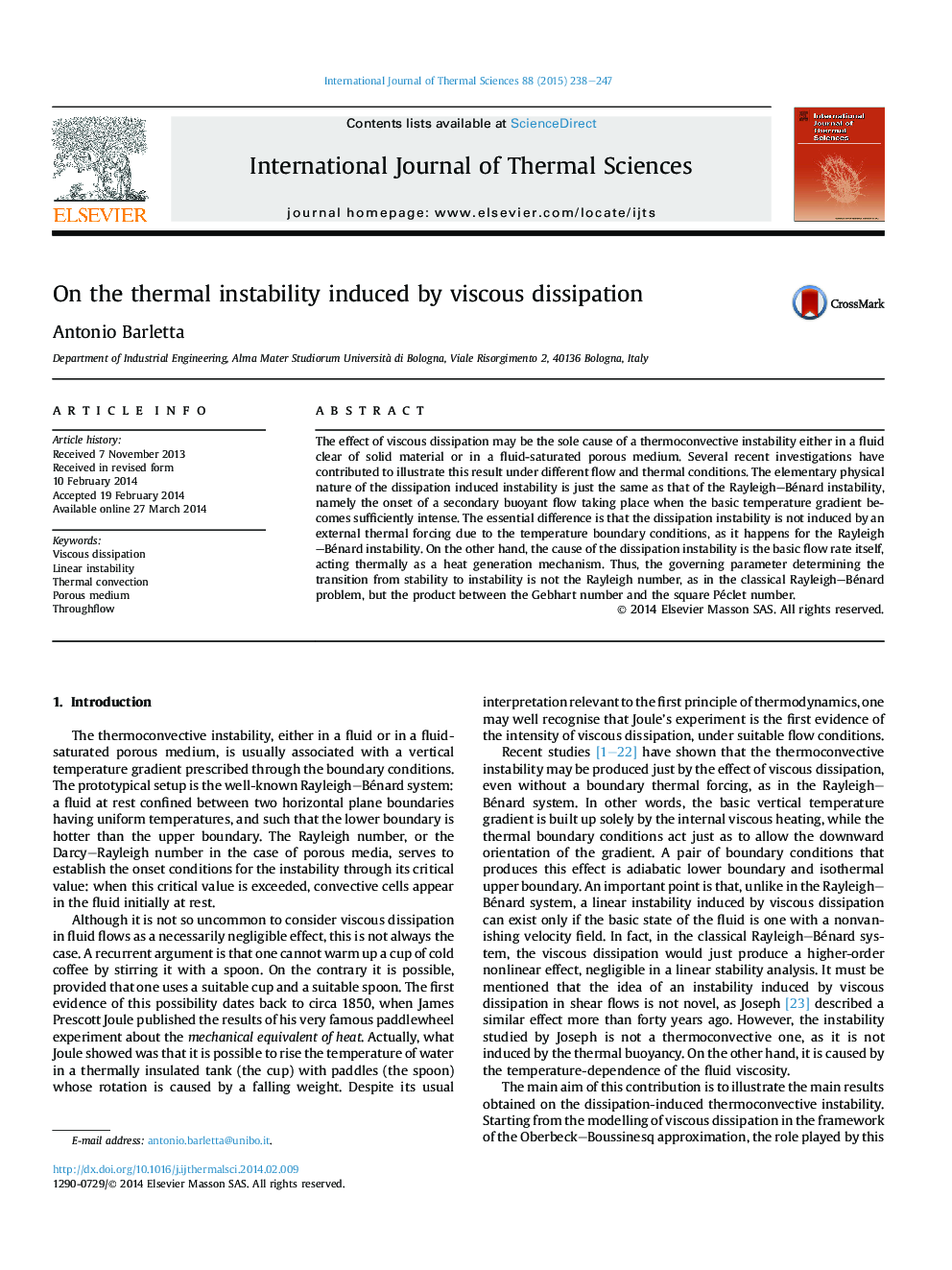| کد مقاله | کد نشریه | سال انتشار | مقاله انگلیسی | نسخه تمام متن |
|---|---|---|---|---|
| 668259 | 1458734 | 2015 | 10 صفحه PDF | دانلود رایگان |
• Viscous dissipation as a source of thermoconvective instability is studied.
• The model of Oberbeck–Boussinesq convection with viscous dissipation is described.
• Literature on this topic is surveyed relative to clear fluids and to porous media.
• Dissipation-instability in a porous channel with an open boundary is investigated.
The effect of viscous dissipation may be the sole cause of a thermoconvective instability either in a fluid clear of solid material or in a fluid-saturated porous medium. Several recent investigations have contributed to illustrate this result under different flow and thermal conditions. The elementary physical nature of the dissipation induced instability is just the same as that of the Rayleigh–Bénard instability, namely the onset of a secondary buoyant flow taking place when the basic temperature gradient becomes sufficiently intense. The essential difference is that the dissipation instability is not induced by an external thermal forcing due to the temperature boundary conditions, as it happens for the Rayleigh–Bénard instability. On the other hand, the cause of the dissipation instability is the basic flow rate itself, acting thermally as a heat generation mechanism. Thus, the governing parameter determining the transition from stability to instability is not the Rayleigh number, as in the classical Rayleigh–Bénard problem, but the product between the Gebhart number and the square Péclet number.
Journal: International Journal of Thermal Sciences - Volume 88, February 2015, Pages 238–247
